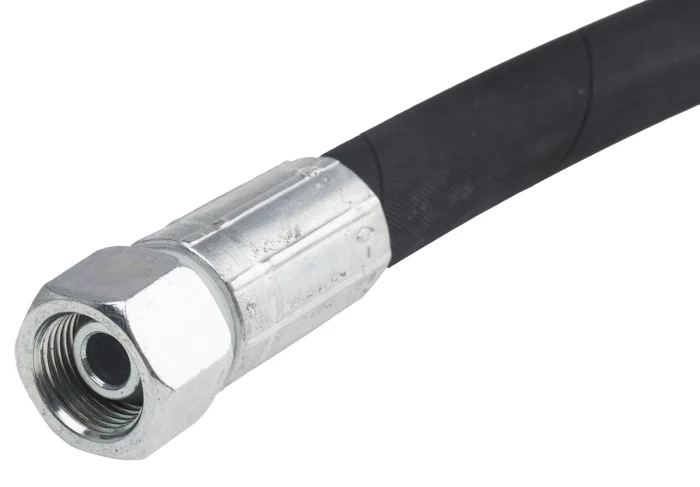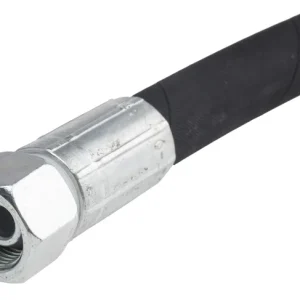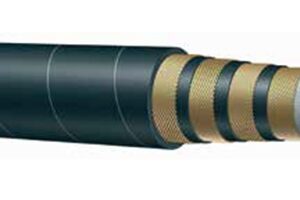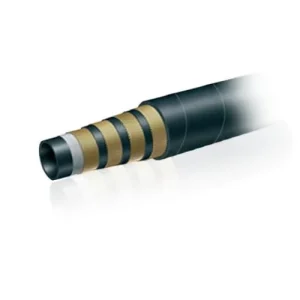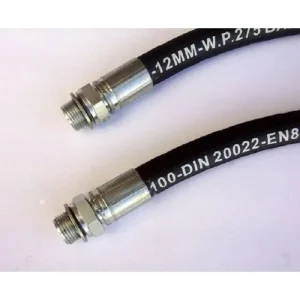Hydraulic Hose
A hydraulic hose is a flexible conduit used to transmit hydraulic fluid (usually oil) from one component to another within a hydraulic system. These hoses are essential components in hydraulic machinery, providing a means for power transmission, control, and fluid movement. Hydraulic hoses are widely used in various industries, including construction, agriculture, mining, manufacturing, and transportation.
Key features and characteristics of hydraulic hoses include:
- Construction: Hydraulic hoses are typically made from synthetic rubber, thermoplastic, or a combination of materials. The construction is designed to withstand the pressure of hydraulic fluids and protect the inner layers from external abrasion and environmental elements.
- Layers: Hydraulic hoses often consist of multiple layers to provide strength, flexibility, and resistance to deformation. The most common layers include an inner tube, reinforcement layers (braided or spiraled), and an outer cover.
- Inner tube: The inner tube comes into direct contact with the hydraulic fluid and is responsible for transmitting the fluid without any leakage. It is made from a material compatible with the type of hydraulic fluid used, such as Nitrile, Neoprene, EPDM (Ethylene Propylene Diene Monomer), or others.
- Reinforcement: The reinforcement layers (typically made of high-strength steel wires or textile materials) give the hose its pressure-bearing capacity. The reinforcement prevents the hose from bursting or collapsing under high-pressure conditions.
- Outer cover: The outer cover serves as protection for the hose against abrasion, weathering, and other external factors that could damage the hose. It is usually made from a synthetic rubber or thermoplastic material with high resistance to wear.
- Fittings and connectors: Hydraulic hoses are attached to hydraulic components using fittings and connectors. These fittings are typically made of steel and provide a secure and leak-proof connection between the hose and the system’s components.
- Pressure rating: Hydraulic hoses are designed for specific pressure ratings, which determine the maximum pressure they can handle safely. The pressure rating depends on the size, construction, and reinforcement of the hose.
- Flexibility: Hydraulic hoses must be flexible to accommodate the movement and operation of hydraulic machinery. The flexibility allows for easy routing and installation of the hoses in complex systems.
- Size and length: Hydraulic hoses come in various sizes, commonly ranging from 1/8″ to 2″ in diameter. The length of the hoses can be customized to suit the specific needs of the hydraulic system.
Proper selection, installation, and maintenance of hydraulic hoses are crucial for the safe and efficient operation of hydraulic machinery. Regular inspections, replacing worn-out hoses, and using compatible hydraulic fluids are essential to prevent leaks, reduce downtime, and ensure the longevity of hydraulic systems.

